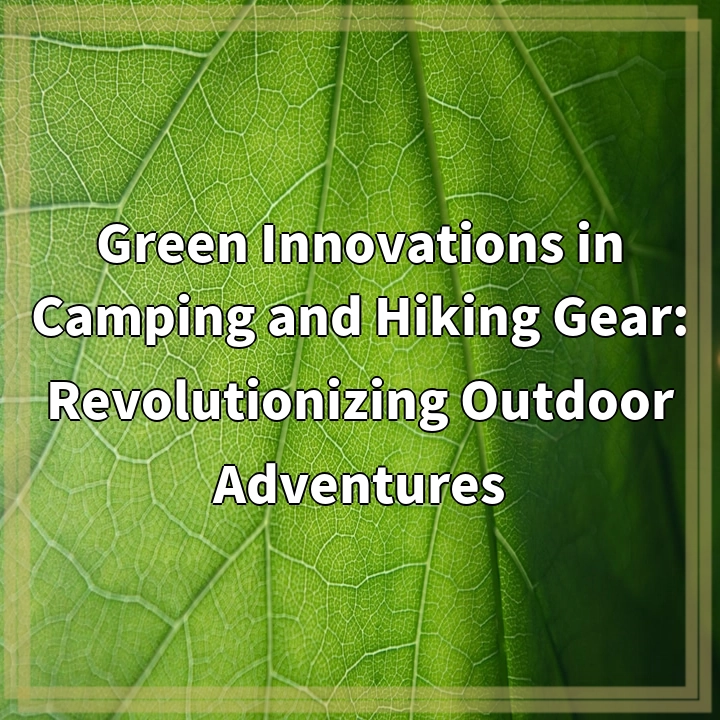
What are Green Innovations in Camping and Hiking Gear?
Green innovations in camping and hiking gear refer to the development and use of environmentally-friendly and sustainable products and practices in the outdoor adventure industry. These innovations aim to reduce the negative impact of outdoor activities on the environment, while still providing high-quality and reliable gear for camping and hiking enthusiasts.
Real-World Problems Associated with Traditional Camping and Hiking Gear
Traditional camping and hiking gear, while essential for outdoor adventures, often contribute to environmental degradation and have negative implications for sustainability. Some of the main problems associated with conventional gear include:
Pollution and Waste:
Many camping and hiking products are made from non-biodegradable materials that contribute to pollution and waste. Single-use items like plastic cutlery, disposable water bottles, and non-recyclable packaging are particularly problematic, as they end up in landfills or natural environments.
Resource Depletion:
The production and consumption of conventional camping and hiking gear often rely on non-renewable resources. Extraction of raw materials, such as metal ores and petroleum-based plastics, contributes to environmental degradation and the depletion of finite resources.
Energy Consumption:
The manufacturing processes involved in producing traditional gear require significant amounts of energy, often contributing to greenhouse gas emissions and climate change. Additionally, the transportation and distribution of these products further add to the carbon footprint associated with outdoor gear.
Harmful Chemicals:
Some camping and hiking gear contain harmful chemicals, such as toxic dyes and flame retardants, which can have adverse effects on both human health and the environment. These chemicals can leach into the soil and waterways, causing contamination and ecosystem disruption.
Disruption of Natural Environments:
The use of conventional gear can result in damage to natural environments. Activities like driving off-road or setting up campsites in fragile ecosystems can disrupt wildlife habitats, promote soil erosion, and disrupt the delicate balance of ecosystems.

Solutions: Green Innovations in Camping and Hiking Gear
1. Eco-Friendly Materials:
Manufacturers are embracing sustainable materials for camping and hiking gear, such as recycled fabrics, organic cotton, and bamboo. These materials are biodegradable, renewable, and have a lower environmental impact compared to traditional materials.
2. Minimalism and Multi-functionality:
Emphasizing minimalist design and multi-functionality reduces the need for excessive gear. Companies are creating innovative products that serve multiple purposes, allowing adventurers to carry fewer items and minimize waste.
3. Waste Reduction:
Companies are aiming to reduce waste by promoting reusable camping and hiking gear, like stainless steel water bottles, collapsible containers, and washable utensils. Additionally, packaging is being designed with sustainability in mind, reducing unnecessary plastic and using recycled materials.
4. Energy Efficiency:
Manufacturers are implementing energy-efficient processes and utilizing renewable energy sources in their production facilities. This helps minimize carbon emissions and reduce the environmental impact associated with manufacturing and transportation.
5. Chemical-Free Options:
Companies are developing camping and hiking gear free from hazardous chemicals. This includes using natural dyes, non-toxic flame retardants, and eco-friendly coatings that do not harm the environment or pose health risks to users.
6. Leave No Trace Principles:
Educating outdoor enthusiasts about “Leave No Trace” principles encourages responsible and sustainable practices while camping and hiking. This involves minimizing campfire impact, packing out waste, respecting wildlife, and leaving natural areas as they were found.















